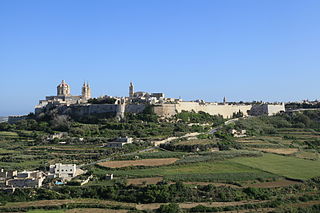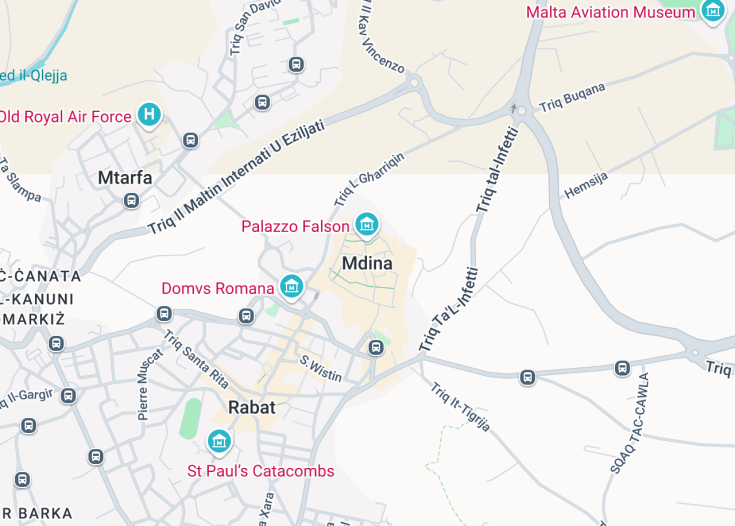Nestled within the heart of Malta, Mdina, known affectionately as the “Silent City,” is a captivating destination steeped in history and timeless elegance. This fortified city, once the capital of Malta, offers travelers a serene atmosphere, stunning medieval and baroque architecture, and panoramic views of the island.
The preservation of its ancient walls, narrow streets, and noble palaces makes Mdina a testament to Malta’s rich historical tapestry, attracting those who seek a profound connection with the past.
For an immersive experience, visit Mdina during the quieter early morning hours or later in the evening to enjoy the city’s timeless ambiance without the crowds.
Consider exploring the Mdina dungeons to discover intriguing tales of medieval Malta, enhancing your understanding of the city’s historical significance.
Mdina: The Silent City
| Country | Malta |
| Time in Mdina | GMT+1 |
| Language spoken | Maltese |
| Population | 235 (World Population Review, 2023) |
| Currency | Euro (€, EUR) |
| Airports |
|
Mdina, an ancient walled city located in the northern region of Malta, stands as a testament to Malta’s rich and tumultuous history, spanning more than 4,000 years. Known as the “Silent City” by locals and tourists alike, Mdina is a rare gem of medieval architecture, largely untouched by the ravages of time. The city’s narrow, winding streets, lined with nobles’ palaces, churches, and monasteries, tell stories of its past as Malta’s old capital until the medieval period.
Walking through the silent streets of Mdina is like stepping back in time. The city is well-preserved and offers a quiet respite from the more crowded tourist spots of Malta. Each building and landmark in Mdina, from the imposing bastions and gates to the splendid St. Paul’s Cathedral, showcases the Baroque and medieval architectural styles that dominate the Maltese islands. One can also find the Mdina Dungeons and the Natural History Museum, providing deeper insights into the city’s and the island’s history.
Moreover, Mdina is not only significant for its visual and historical appeal but also for its cultural impact. The city hosts various cultural activities and festivals that attract visitors from all over the world. The Mdina Medieval Festival, in particular, is a colorful two-day event that revives the city’s medieval period, through re-enactments, medieval banquets, and markets.
The strategic location of Mdina, on top of a hill, provides visitors with a panoramic view of the island. This vantage point made Mdina an important administrative and military base in ancient times. Today, it offers breathtaking views of the Maltese landscape, stretching to the surrounding coastlines. The city’s elevation and fortification also explain its nickname, as its thick walls and structured layout contributed to the eerie tranquility it’s renowned for after sunset, preserving its medieval character.
Where is Mdina?
Mdina is strategically perched on a hill in the central part of Malta, offering far-reaching views across the island.
Distances:
| Route | Distance by car | Time by car |
|---|---|---|
| Valletta to Mdina | 9 miles | 30 minutes |
| St. Julian’s to Mdina | 8 miles | 25 minutes |
What is Mdina famous for?
Mdina is well-known for its timeless atmosphere, significant architectural sites, and as a remarkable example of an ancient fortified city. Its nickname, “The Silent City,” emphasizes its peaceful ambiance, making it a unique destination in Malta.
History
Prehistory-700 AD: Ancient Beginnings
The area now known as Mdina has been settled since prehistory. Archaeologists have found evidence that during the Bronze Age, the area was fortified, likely due to its strategic hilltop position. Its early name was ‘Maleth’ founded by the Phoenicians around the 8th century BC, serving as a center of commerce and governance.
870-1530 AD: Arab Influence and the Medieval Period
The Arabs, who dominated Malta from 870 to 1091, heavily influenced Mdina. They redesigned the city into a typical medieval layout with narrow, winding streets and introduced citrus fruits and cotton. The name ‘Mdina’ is derived from the Arab word ‘Medina’ meaning ‘city.’ Post the Norman conquest in 1091, Mdina benefited from architectural and cultural developments, despite losing some importance to the new capital, Valletta.
1530-1798: The Knights of St. John
When the Knights Hospitaller (Knights of St. John) arrived in Malta, Mdina experienced a renaissance of art and culture, although it was overshadowed by Valletta, the new capital established by the Knights. During this period, notable buildings such as the Vilhena Palace and the Cathedral of St. Paul were either built or received significant enhancements.
1798-Present: Modern Mdina
The French occupation of Malta in 1798 led by Napoleon marked a challenging period for Mdina, as it did for the rest of the island. However, after the British took control in the early 19th century, Mdina saw a period of calm and steady architectural conservation. Today, Mdina is highly regarded for its well-preserved medieval and baroque architecture, attracting scholars, tourists, and film productions alike. The city’s rich history and unique ambiance make it a prime example of European historical and cultural continuity.
Visit Mdina
What to see and do in Mdina
Mdina, often referred to as the “Silent City,” offers a myriad of attractions and activities. Visitors can explore the Mdina Dungeons, experience the grandeur of St. Paul’s Cathedral, or enjoy the breathtaking views from the Bastion walls.
Art enthusiasts will appreciate the Mdina Glass workshops, showcasing traditional Maltese glass-making techniques.
- Stroll through the winding medieval streets
- Visit the Mdina Cathedral and Museum
- Enjoy panoramic views at Mdina Bastions
- Experience the Mdina Dungeons
- Attend a glassblowing session at Mdina Glass
Festivals and Events in Mdina
Throughout the year, Mdina hosts various cultural events and festivals, enriching its historical ambiance. Key events include the Mdina Medieval Festival in April, where the city reverts to its medieval roots with reenactments, crafts, and food, and the Classic Car Grand Prix in October, showcasing vintage cars in a uniquely historical setting.
Best time to visit Mdina
To fully enjoy Mdina’s charm, the best time to visit is during the spring (April to June) or autumn (September to November). The weather is pleasant, and the city is less crowded, allowing for a more relaxed exploration of its historical and architectural treasures.
Is Mdina worth visiting?
Mdina is indeed worth visiting. This walled city, rich in history and atmosphere, offers a tranquil retreat from the more crowded tourist spots of Malta.
Its impeccably preserved medieval and baroque architecture serves as a backdrop for its vibrant cultural events, and its panoramic views are unparalleled. Mdina is not just a destination; it’s an experience that transports visitors back in time.









